7 great inventors killed by their own inventions
 Bashny.Net
Bashny.Net
The inventors spend years of his life to his invention; modify and improve them as long as they are not ready to reveal them to the world. The rest of the lives of many of them hidden in the darkness, but to this rule there are obvious exceptions. There are those whose inventions are not only attracted the attention of mankind, but also (somehow) caused the death of its inventor.
1. Franz Reichelt - Costume-parashyut
Franz Reichelt (1879-1912) was convinced that design can suit for pilots, which is able to turn into a parachute. Known as "The Flying Tailor", Austrian-born Frenchman lost his life when the February 4, 1912, he jumped from the first platform of the Eiffel Tower in his suit. Despite the fact that it was planned to use a dummy at the last minute he decided to test his invention on their own. Unfortunately for Reyshelta and his family, the belief that his invention would work, be just wishful thinking.
After Reichelt hit the ground before a crowd of observers, he was immediately taken to hospital, even though it was already dead. There is a video of his deadly 90-meter jump, which is accompanied by the comment: "As if he felt terrible fate that awaits him, the unfortunate inventor hesitated a long time before you jump into the void».
2. Max Valier - Oil fired rocket dvigatel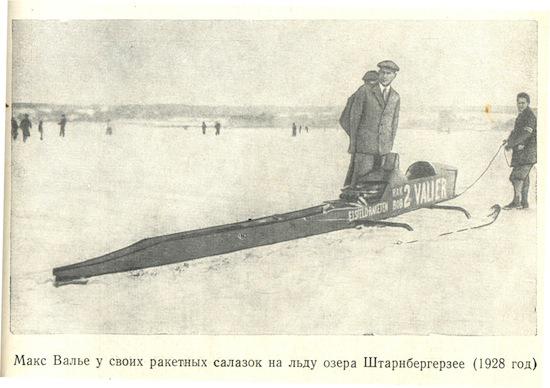
Max Valle (1895-1930) was at the forefront of rocket science in Germany and was one of the founders of the «Verein für Raumschiffahrt» (Society of space flights) - many of whose members were responsible for the success of space programs of the 20th century.
In the 1930s the society worked with liquid-fuel rockets, and Valle was behind the idea of the first test-drive a car with a rocket engine. Unfortunately, this type of engine and destroyed it: a month later, on May 17, 1930, the rocket on which the Valle worked in his laboratory in Berlin, exploded, shooting a metal fragment in his right pulmonary artery, thereby killing him.
3. Otto Lilienthal - Planer
Known as the "King of the gliders," Otto Lilienthal (1848-1896) did not invent, "off from nowhere." German inventor and aviation pioneer, Lilienthal undertook controlled experiments and was the first who managed to make repeated and documented certified soaring flight.
Thanks Lilienthal press and publications of his successes, the scientific community and the general public began to realize that the possibility of the existence of flying cars is quite real. Lilienthal was also the first who managed to make a controlled flight in heavier-than-air - a feat for which he earned the nickname "Father of Flight." The Wright brothers also followed his work and called him his inspiration. Unfortunately, after the 2000 flights, Lilienthal was killed when the August 9, 1896 his glider suddenly dived from a height of 56 feet (~ 20 meters). during the fall he broke his spine and died the next day, having to say his last words, "The victims are inevitable».
4. Harry K. Dalian Junior Louis Slotin - Demonic Yadro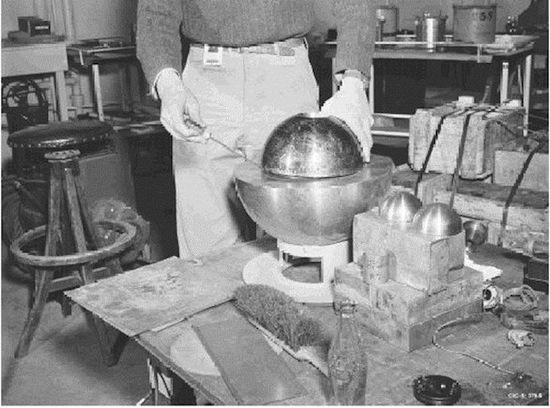
American Harry K. Dalian Junior (1921-1945) and the Canadian Louis Slotin (1910 - 1946) were physicists who were exposed to radiation, and both were killed in similar incidents in the course of work on the atomic bomb in Los Alamos Laboratory in New Mexico. August 21, 1945 Dalian accidentally dropped the bar of tungsten carbide on plutonium core - making him a "supercritical". In a panic, he tried unsuccessfully to bring down the Dalian bar, and then was forced to partially disassemble the tungsten blocks to stop the nuclear reaction. He died of acute radiation sickness 25 days later.
The second victim of the "critical incident" was Louis Slotin, after May 21, 1946 accidentally dropped a screwdriver and started the reaction of nuclear fission. He died more quickly, after just 9 days after the incident which caused the blue light and intense heat that hit Slotin. By coincidence, in the experiment on which he worked, to use the same plutonium core, which killed Dalian. Because of its dark legacy, kernel later earned the nickname "demonic».
5. Jean-Francois Pilatre de Rozier - Ball Roze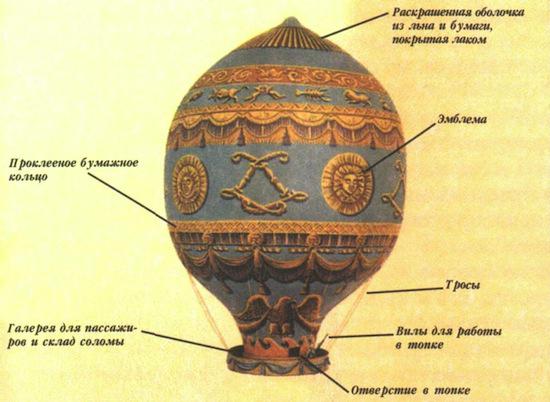
Frenchman Jean-Francois Pilatre de Rozier (1754-1785) is an outstanding aviator with several achievements to be proud of. The first of these was the fact that it, together with the Marquis d'Arlandesom November 21, 1783 made the first manned flight of a continuous hot-air balloon. The second was much less successful: June 15, 1785 he and his companion, Pierre became the first novel in the history of the victims of the air disaster when they were killed while attempting to cross the English Channel in a balloon.
Since the ball Montgolfier, which he used in the first uncontrolled flight, was not suited for longer flights, de Rosier has developed its own version of the world, which is used both hydrogen and hot air. During the ensuing flight, change of wind turned the ball back to land their ball suddenly flattened, and they fell from a height of about 500 meters. Even more sad is that the bride Rozier died eight days later, as many believe, committed suicide.
Horace Lawson Hunley 6. - Submarine Hanli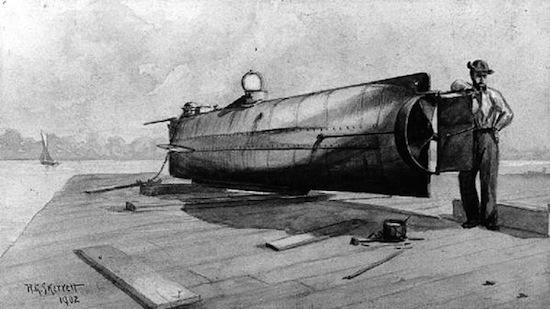
Horace Lawson Hunley (1823-1863) fought for the Confederacy during the American Civil War. As a marine engineer, he invented the submarine is propelled by hand, one of which was the cause of his death, and was later named in his honor.
The submarine Hunley has had several fatalities to his credit: the first team boat was flooded by a wave of a passing vessel, the boat when the hatches were opened; five people were killed. He was hired by the second team of volunteers and in the normal course of the exercise Hanley decided to independently command the boat. October 15, 1863 the submarine sank, and all eight people on board lost their lives. Later, she was raised to the surface and became famous as the first submarine in history to sink an enemy successfully ship.
7. Aurel Vlaicu - Aeroplan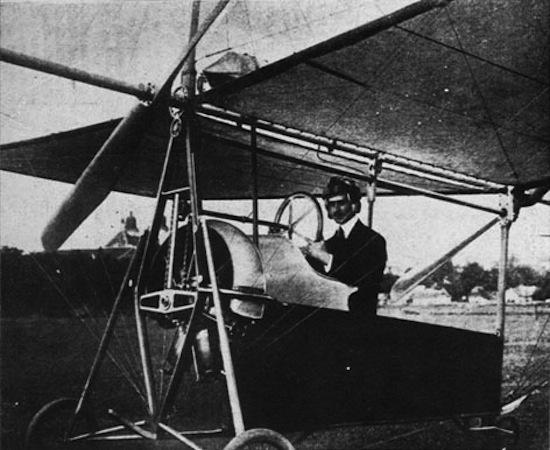
Aurel Vlaicu (1882-1913) was an engineer and inventor of the airplane, born in Romania. He built his first airplane, and June 17, 1910 made a flight on it. Vlaicu then built his second airplane and won many awards at aero show in 1912. Unfortunately, he was killed by his own offspring September 13, 1913, when "Vlaicu II» refused when attempting to cross the Carpathian Mountains. Vlaicu already working on a new airplane called "Vlaicu III», but when he heard that two other Romanian pilots planning to cross the Carpathians, he made a hasty decision to use your old and worn out "Vlaicu II» rather than wait for completion of the work on a new model . It was a decision that cost him his life.
Source: www.mixednews.ru
via factroom.ru
1. Franz Reichelt - Costume-parashyut

Franz Reichelt (1879-1912) was convinced that design can suit for pilots, which is able to turn into a parachute. Known as "The Flying Tailor", Austrian-born Frenchman lost his life when the February 4, 1912, he jumped from the first platform of the Eiffel Tower in his suit. Despite the fact that it was planned to use a dummy at the last minute he decided to test his invention on their own. Unfortunately for Reyshelta and his family, the belief that his invention would work, be just wishful thinking.
After Reichelt hit the ground before a crowd of observers, he was immediately taken to hospital, even though it was already dead. There is a video of his deadly 90-meter jump, which is accompanied by the comment: "As if he felt terrible fate that awaits him, the unfortunate inventor hesitated a long time before you jump into the void».
2. Max Valier - Oil fired rocket dvigatel

Max Valle (1895-1930) was at the forefront of rocket science in Germany and was one of the founders of the «Verein für Raumschiffahrt» (Society of space flights) - many of whose members were responsible for the success of space programs of the 20th century.
In the 1930s the society worked with liquid-fuel rockets, and Valle was behind the idea of the first test-drive a car with a rocket engine. Unfortunately, this type of engine and destroyed it: a month later, on May 17, 1930, the rocket on which the Valle worked in his laboratory in Berlin, exploded, shooting a metal fragment in his right pulmonary artery, thereby killing him.
3. Otto Lilienthal - Planer

Known as the "King of the gliders," Otto Lilienthal (1848-1896) did not invent, "off from nowhere." German inventor and aviation pioneer, Lilienthal undertook controlled experiments and was the first who managed to make repeated and documented certified soaring flight.
Thanks Lilienthal press and publications of his successes, the scientific community and the general public began to realize that the possibility of the existence of flying cars is quite real. Lilienthal was also the first who managed to make a controlled flight in heavier-than-air - a feat for which he earned the nickname "Father of Flight." The Wright brothers also followed his work and called him his inspiration. Unfortunately, after the 2000 flights, Lilienthal was killed when the August 9, 1896 his glider suddenly dived from a height of 56 feet (~ 20 meters). during the fall he broke his spine and died the next day, having to say his last words, "The victims are inevitable».
4. Harry K. Dalian Junior Louis Slotin - Demonic Yadro

American Harry K. Dalian Junior (1921-1945) and the Canadian Louis Slotin (1910 - 1946) were physicists who were exposed to radiation, and both were killed in similar incidents in the course of work on the atomic bomb in Los Alamos Laboratory in New Mexico. August 21, 1945 Dalian accidentally dropped the bar of tungsten carbide on plutonium core - making him a "supercritical". In a panic, he tried unsuccessfully to bring down the Dalian bar, and then was forced to partially disassemble the tungsten blocks to stop the nuclear reaction. He died of acute radiation sickness 25 days later.
The second victim of the "critical incident" was Louis Slotin, after May 21, 1946 accidentally dropped a screwdriver and started the reaction of nuclear fission. He died more quickly, after just 9 days after the incident which caused the blue light and intense heat that hit Slotin. By coincidence, in the experiment on which he worked, to use the same plutonium core, which killed Dalian. Because of its dark legacy, kernel later earned the nickname "demonic».
5. Jean-Francois Pilatre de Rozier - Ball Roze

Frenchman Jean-Francois Pilatre de Rozier (1754-1785) is an outstanding aviator with several achievements to be proud of. The first of these was the fact that it, together with the Marquis d'Arlandesom November 21, 1783 made the first manned flight of a continuous hot-air balloon. The second was much less successful: June 15, 1785 he and his companion, Pierre became the first novel in the history of the victims of the air disaster when they were killed while attempting to cross the English Channel in a balloon.
Since the ball Montgolfier, which he used in the first uncontrolled flight, was not suited for longer flights, de Rosier has developed its own version of the world, which is used both hydrogen and hot air. During the ensuing flight, change of wind turned the ball back to land their ball suddenly flattened, and they fell from a height of about 500 meters. Even more sad is that the bride Rozier died eight days later, as many believe, committed suicide.
Horace Lawson Hunley 6. - Submarine Hanli

Horace Lawson Hunley (1823-1863) fought for the Confederacy during the American Civil War. As a marine engineer, he invented the submarine is propelled by hand, one of which was the cause of his death, and was later named in his honor.
The submarine Hunley has had several fatalities to his credit: the first team boat was flooded by a wave of a passing vessel, the boat when the hatches were opened; five people were killed. He was hired by the second team of volunteers and in the normal course of the exercise Hanley decided to independently command the boat. October 15, 1863 the submarine sank, and all eight people on board lost their lives. Later, she was raised to the surface and became famous as the first submarine in history to sink an enemy successfully ship.
7. Aurel Vlaicu - Aeroplan

Aurel Vlaicu (1882-1913) was an engineer and inventor of the airplane, born in Romania. He built his first airplane, and June 17, 1910 made a flight on it. Vlaicu then built his second airplane and won many awards at aero show in 1912. Unfortunately, he was killed by his own offspring September 13, 1913, when "Vlaicu II» refused when attempting to cross the Carpathian Mountains. Vlaicu already working on a new airplane called "Vlaicu III», but when he heard that two other Romanian pilots planning to cross the Carpathians, he made a hasty decision to use your old and worn out "Vlaicu II» rather than wait for completion of the work on a new model . It was a decision that cost him his life.
Source: www.mixednews.ru
via factroom.ru
Tags
See also
50 Words of wisdom of the Japanese people:
Inventors who are victims of their own creations
Woman, perhaps, did not create any more ...
Ingenious inventions and mysteries of Leonardo da Vinci
Lowell wood: a journey from student to genius inventor of America
Five inventors killed by their creations
Great people
18 withhold from the public the most inventions
14 puzzles and inventions that left behind a great Leonardo da Vinci
Alexanderson Day - humble the great inventor

















